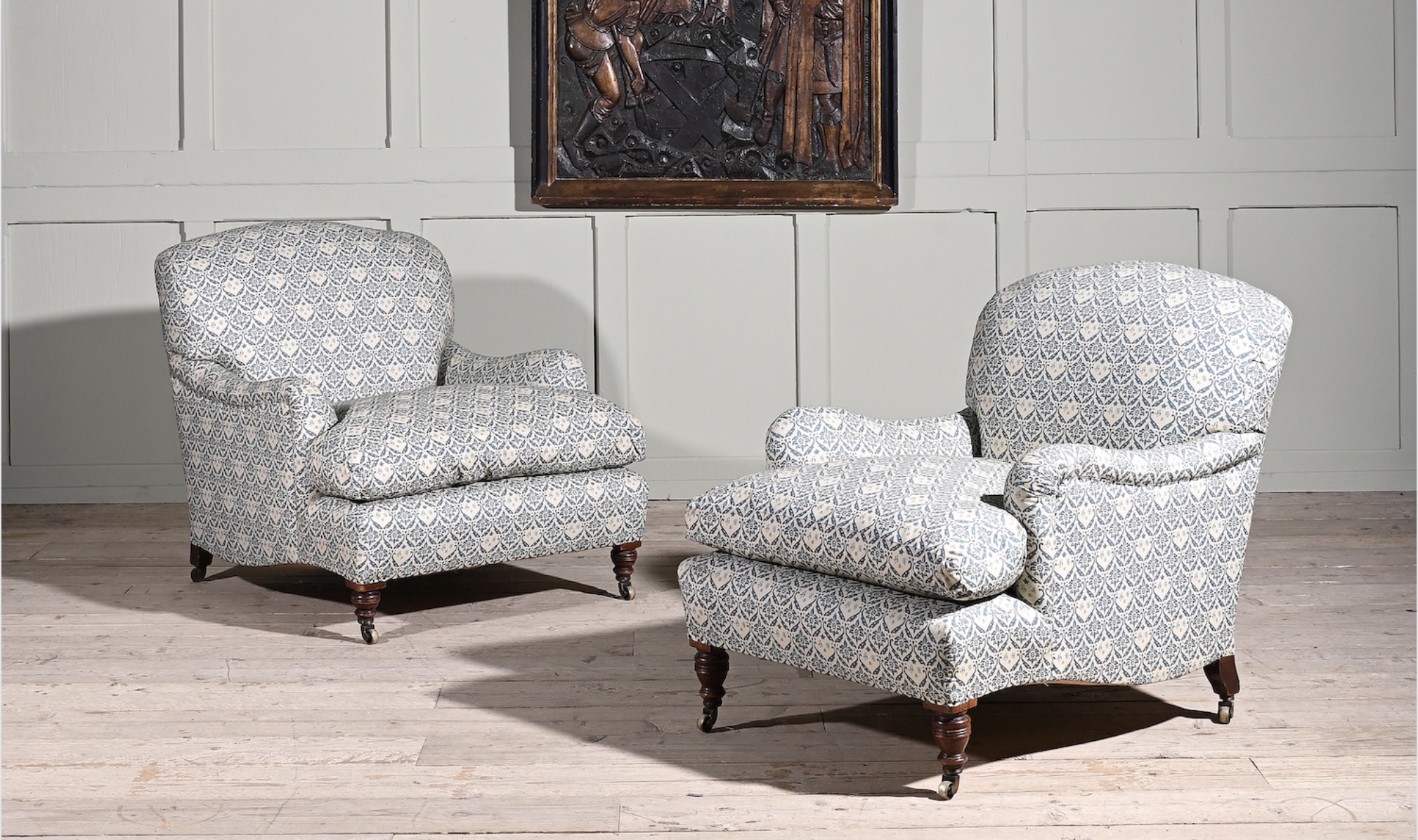#Drew #Pritchard #collection #Dreweatts #Antique #Collecting
 The private collection of the original treasure-hunter, Drew Pritchard of TV show Salvage Hunters is set to sell at Dreweatts in a sale titled Drew Pritchard: The Collection on March 5 and 6.
The private collection of the original treasure-hunter, Drew Pritchard of TV show Salvage Hunters is set to sell at Dreweatts in a sale titled Drew Pritchard: The Collection on March 5 and 6.
Drew is well-known to viewers for his keen eye and ability to identify valuable pieces that may not be in their perfect state, but have the potential to be brought back to life with good restoration. The well-known television star and antique dealer’s collection is diverse, with everything from beautiful period furniture to more eclectic objects, such as vintage signage and architectural works.
Trained initially as a stained glass restorer, who already had a passion for antiques, Drew’s collection reflects his skills in valuing the pieces he finds, but also shows an understanding of the history and backstory of the works. He has rummaged through everywhere from aeroplane hangers to old schools to find hidden gems and his collection is testament to remarkable finds, as well as his knowledge.
Over his many years of hunting, his purchases have been to either sell on, or to furnish his own properties. The sale will offer the opportunity to attain works that have been chosen by Drew for a specific reason, which means each piece has a unique backstory and quality. The sale, which is estimated to fetch over £700,000, comprises approximately 500 lots, which range in estimate from £200 up to £30,000.
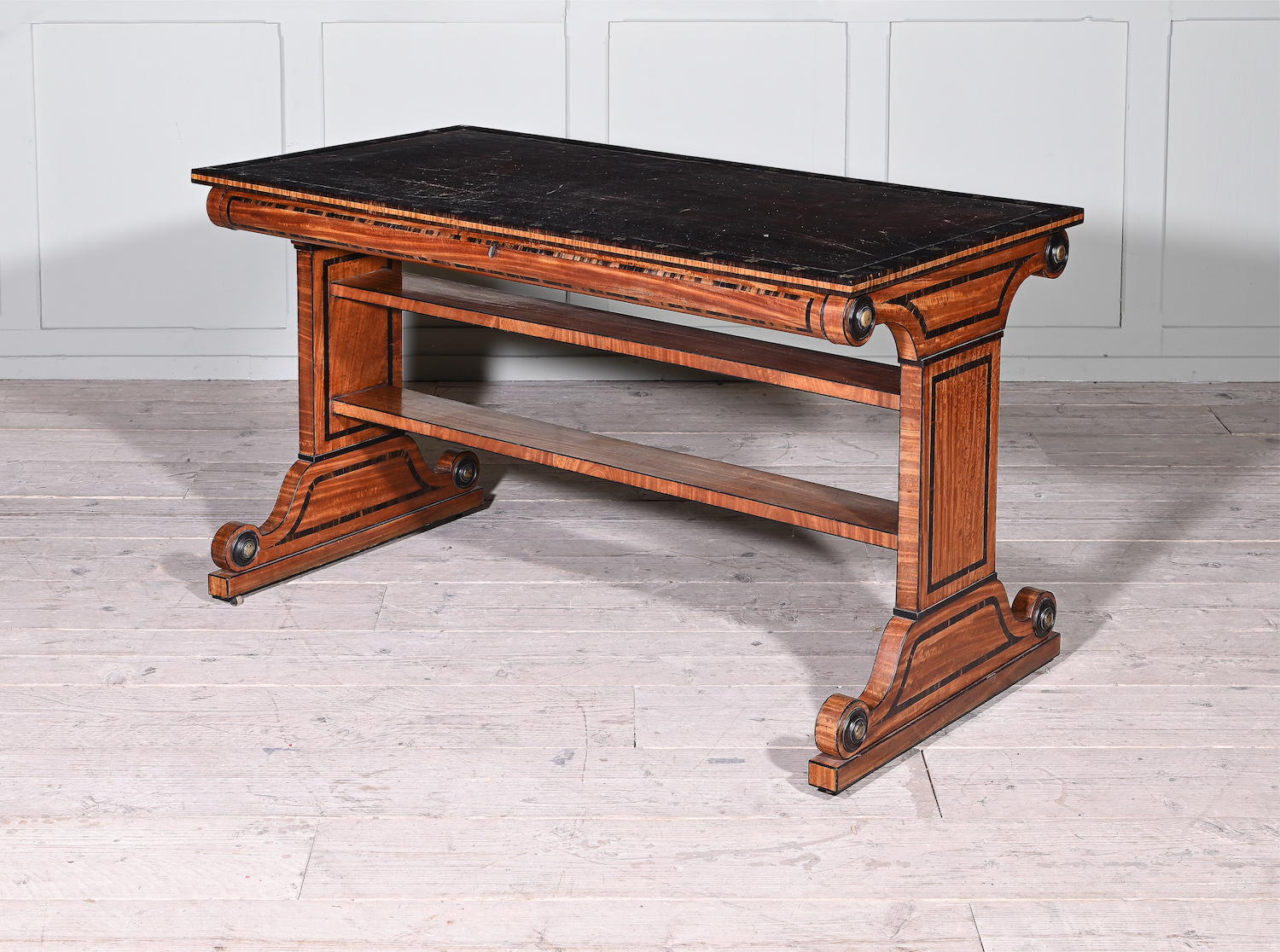
Among the highlights is a fine regency satinwood, Macassar and ebony library table by George Oakley (1773-1840), one of the most famous cabinet makers in Regency London, which earned him a royal patronage. Oakley was a leading exponent of Grecian furniture which was highly popular in the 19th century. In 1801, the Journal des Luxus und der Moden spoke of: ‘everyone of taste and discrimination making their purchases at Oakley’s, the most tasteful of London’s cabinet’. The use of exotic timbers, brass inlay and six point brass inlaid stars are all features seen on Oakley’s recorded work. The table, in the manner of Thomas Hope (1769-1831), who was a Dutch influential designer and collector sports trestle end supports with brass bosses to each end, all with ebony surrounds. Highly decorative the brown leather insert is surrounded by inlaid brass stars mimicking the ‘emblems of the night’ this brass star pattern was used extensively by Hope. The table is estimated to fetch £12,000-£18,000.
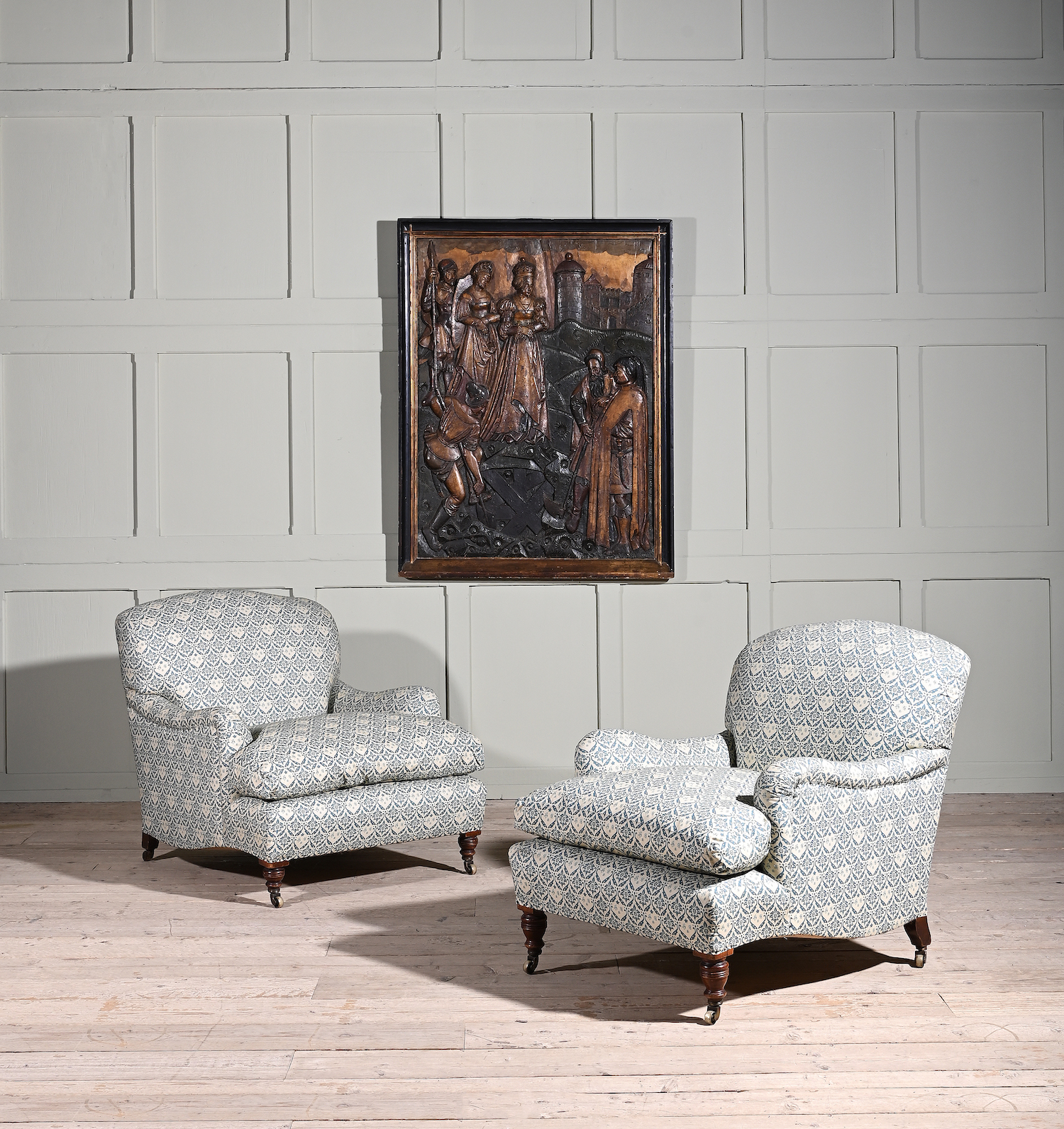
A matched pair of walnut and upholstered Bridgewater & Grafton armchairs by Howard and Son with stamped legs (detailing the maker), should prove popular, as the furniture makers (John Howard and his son George), led the way in English furniture in the 19th century. They invented modern techniques, such as siege de duvet (trapped cushions) and innovative frame designs, such as the ‘Bridgewater’, which transformed furniture making and are still copied by furniture makers today. The company received a Royal Warrant in 1901 and became popular around the globe. This pair of chairs is a fine example of their workmanship and is estimated to fetch £15,000-£25,000.
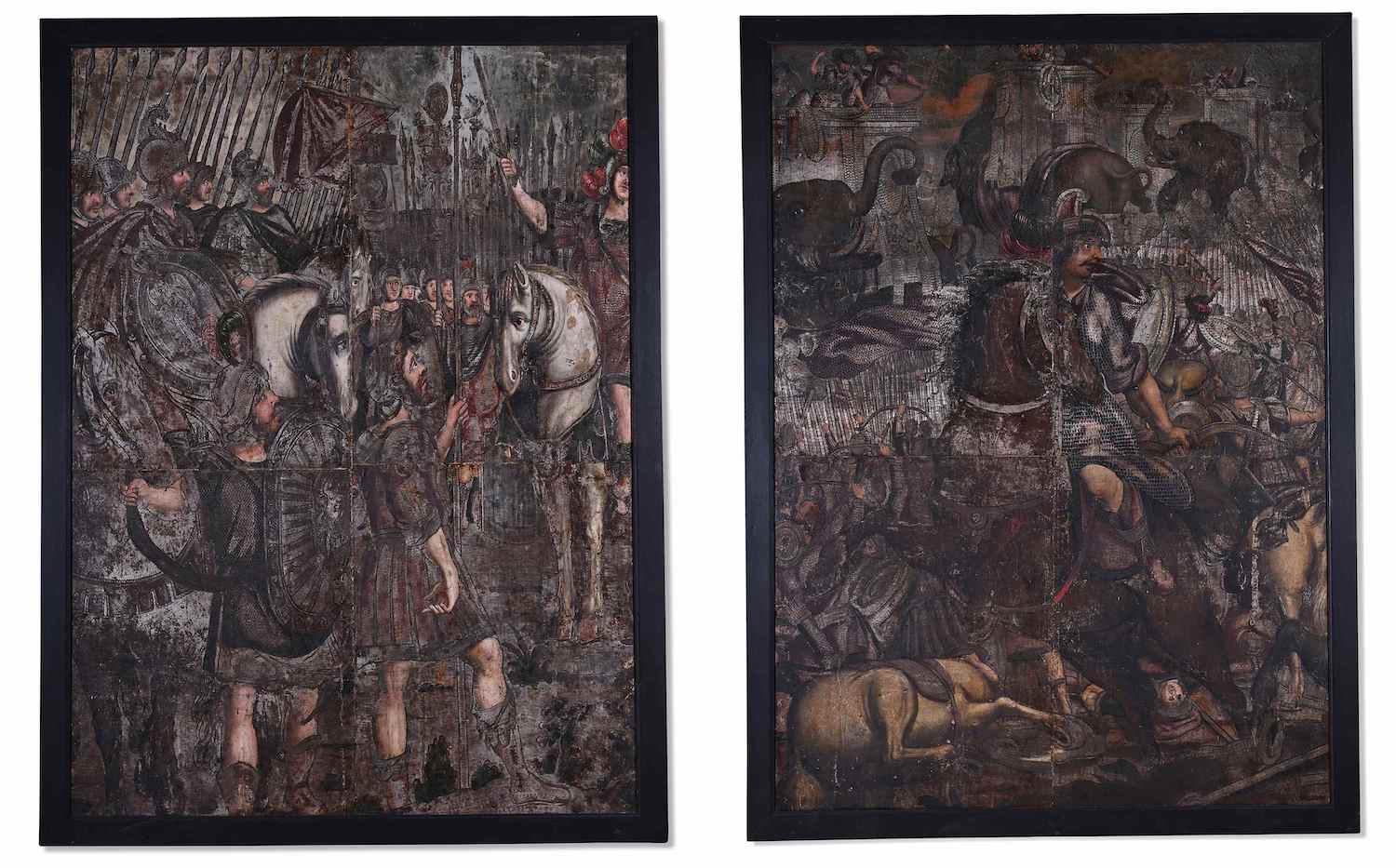
An impressive pair of 18th/early 19th-century leather panels believed to have come from a family member at Soldon Manor in Devon, depicts the Battle of Cannae, a key engagement of the Second Punic war between the Roman Republic and Carthage (an ancient Phoenician city in Northern Africa that was the most powerful city in the region, due to its proximity to trade routes and its vibrant harbour). One of the greatest tactical feats in military history and one of the worst defeats in Roman history, the battle cemented Hannibal Barca’s reputation as one of antiquity’s great tacticians. The pair carries an estimate of £8,000-£12,000.
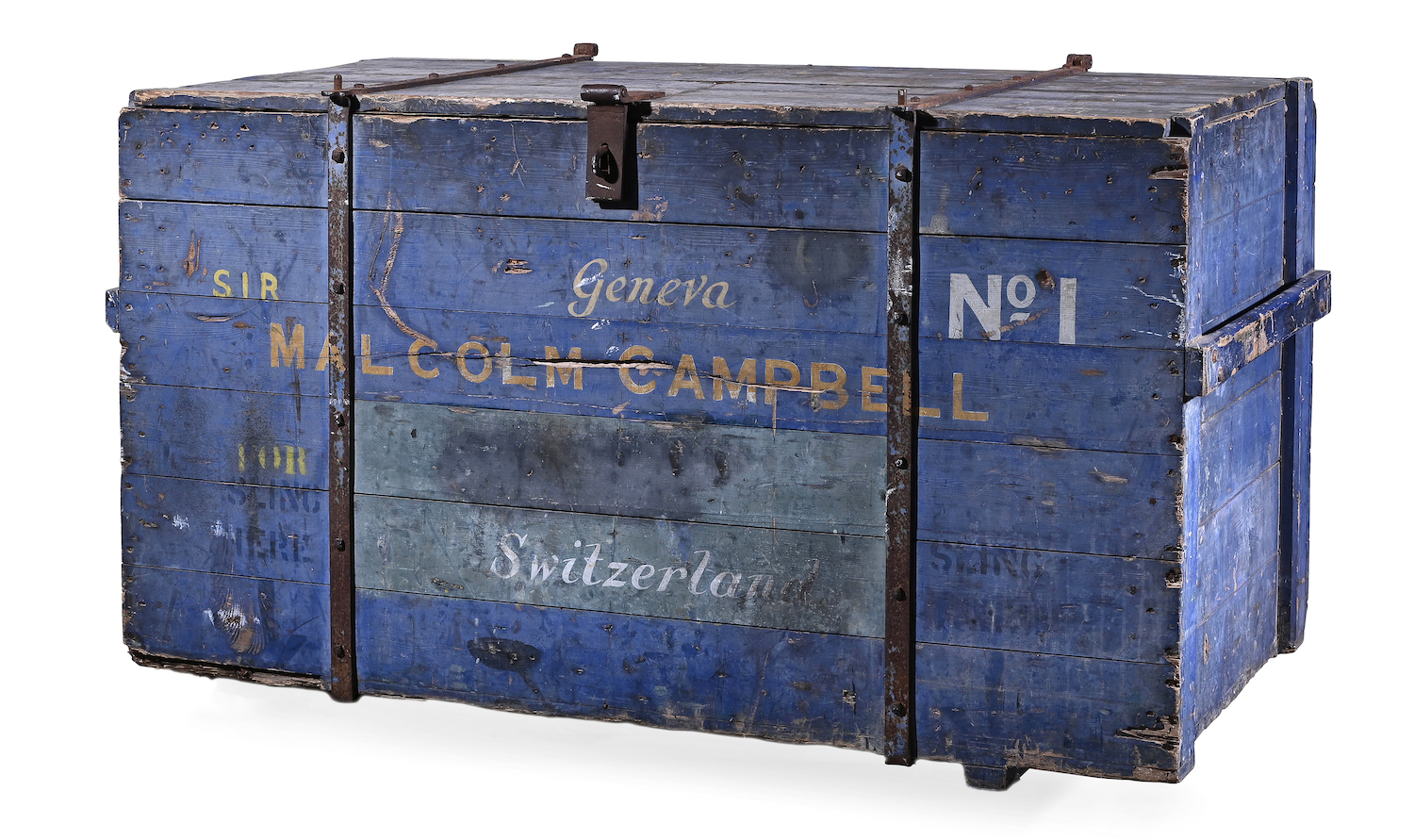
A fabulous piece of transport history for any motoring enthusiast, is a large painted wood and iron bound engineer’s chest for the famous Bluebird car series, owned by Sir Malcolm Campbell (1885-1948), who famously first broke the land speed record in 1924. Campbell was Knighted at Buckingham Palace by George V in 1931 after another successful land record of 245.736 mph was broken at Daytona Beach, Florida.
The multi-layered blue paint on the chest reflects the changing of the colour of Campbell’s Bluebird vehicles over time. There is also evidence that the chest was used before Campbell was knighted, as the title ‘Sir’ appears to have been added, dating the chest back to Campbell’s earlier speed records. The underside of the lid bears chalk inscribed numbers, a remnant of calculations for one of Campbell’s speed record attempts. The chest belonged to Sir Malcolm Campbell’s long-serving mechanic, Leopoldo Alfonso Villa OBE (1899-1979), who played a key role in nine land and four water world speed record attempts. Following Sir Malcolm Campbell’s passing Villa found himself continuing to be chief mechanic to the many record attempts of Sir Malcolm’s son Donald Campbell (1921-1967). Drew purchased the chest for his own collection in 2015. It has an estimate of £20,000-£30,000.
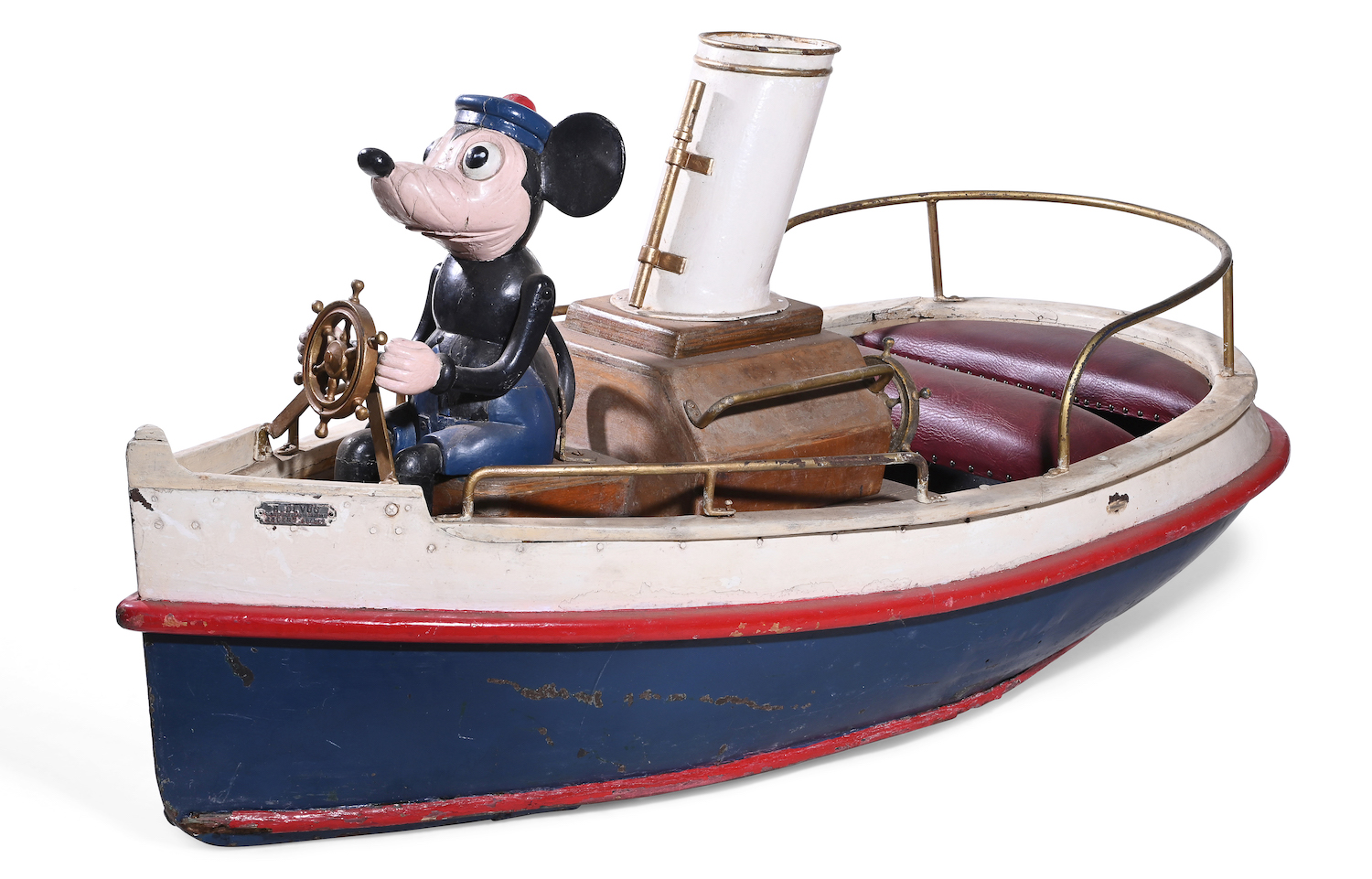
A rare ‘Steam Boat Willie’ fairground ride boat, dating from circa 1930 is one of the more unusual items in the sale. Sold from France into the English market as a popular fairground ride, this example is one of only a small number now in existence. Steamboat Willie was the first film starring Mickey Mouse in his earliest form in 1928, before becoming the face of Disney. It was also the first animated film to be released with a synchronised soundtrack, having a significant impact on the progression of the film industry and securing an important place in history. The ride comes with a cast iron plaque stating: ‘H. Devos Constructions Foraines Angus, France’ and carries an estimate of £3,000-£5,000.
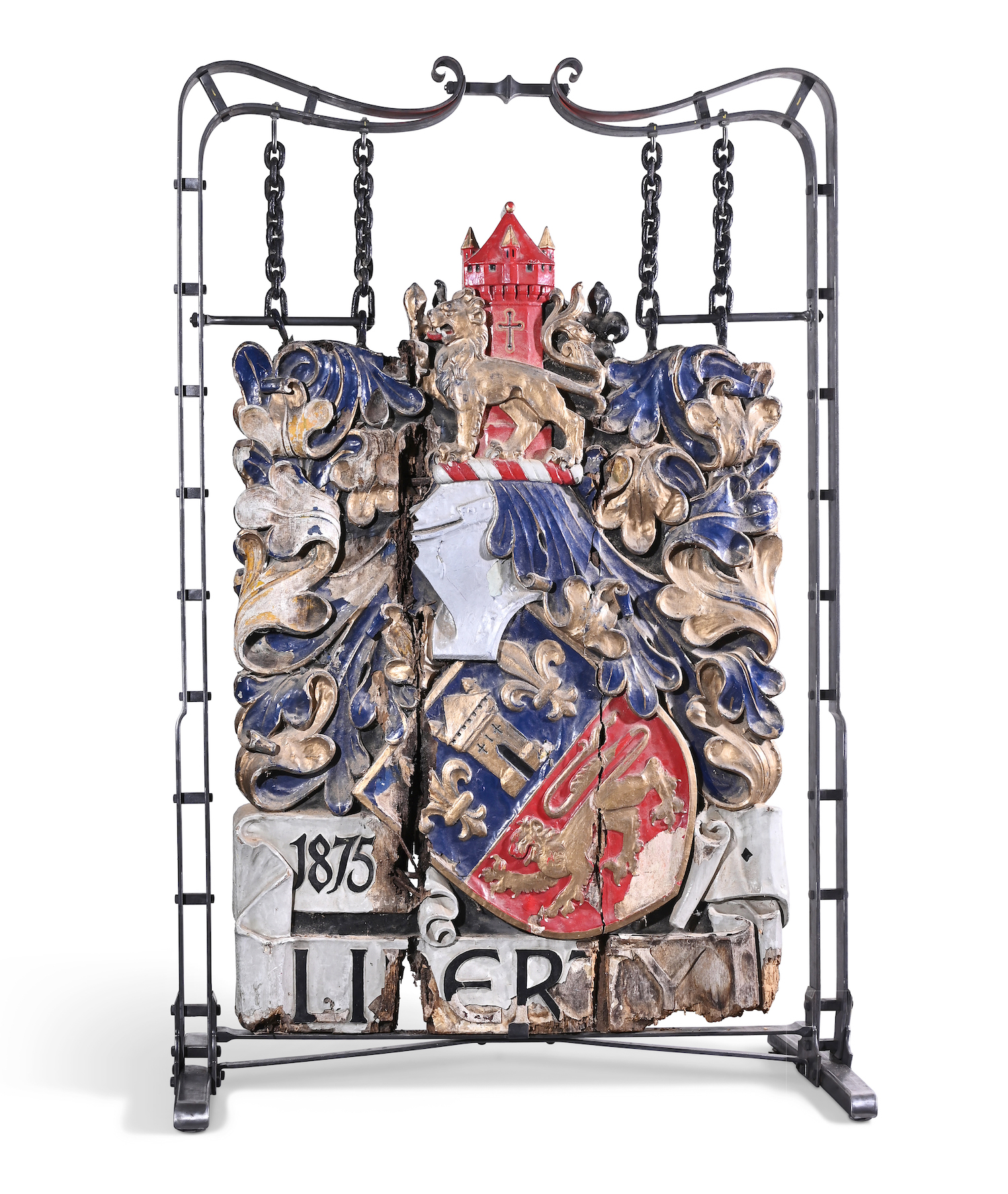
An original Liberty retailers sign that hung outside Liberty & Co in London’s Regent Street is another unusual slice of history. The large carved, gilded and polychrome painted sign that hung proudly outside their premises, dates from 1875, the year the company was founded by Arthur Lasenby Liberty (1843-1917). It has an estimate of £8,000-£12,000.
Speaking about the sale of his collection, Drew said: “2023 marked my 30th year in the antiques trade and this collection is a vignette of that work. Anyone who deals in antiques knows it’s all consuming. This collection is part of that 30 years of obsessively collecting and dealing. I look forward to and am excited by the possibilities of the next 30 years.”
Commenting on the sale, Ben Brown, Head of Dreweatts Furniture, Rugs and Carpets department, said: “Dreweatts is delighted to be able to offer Drew’s unique collection with all of its highly interesting, original and eclectic qualities.”

